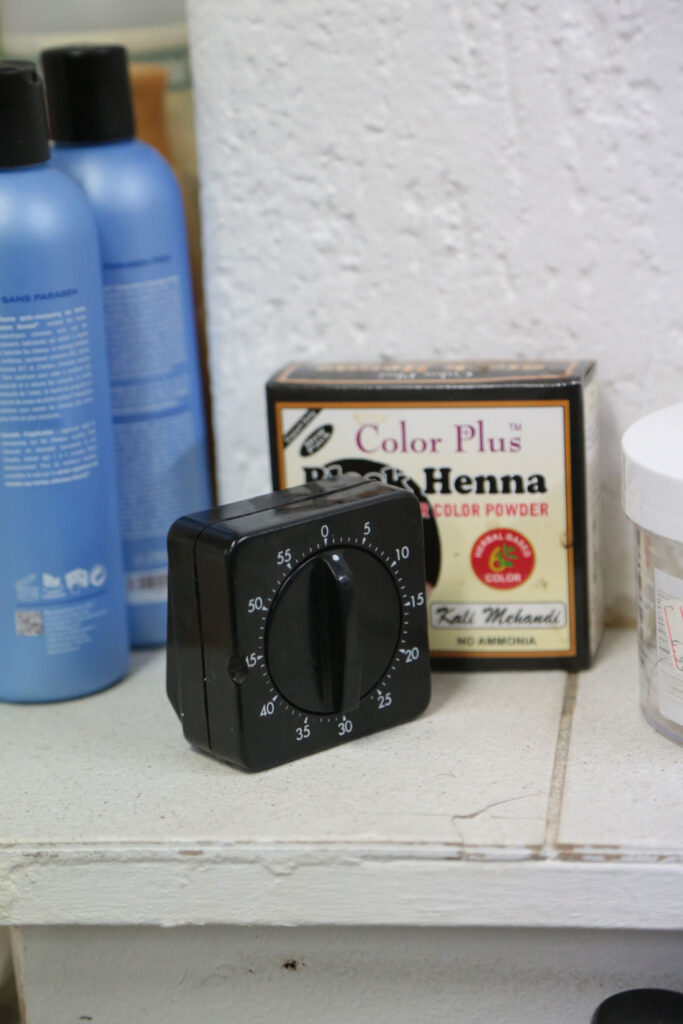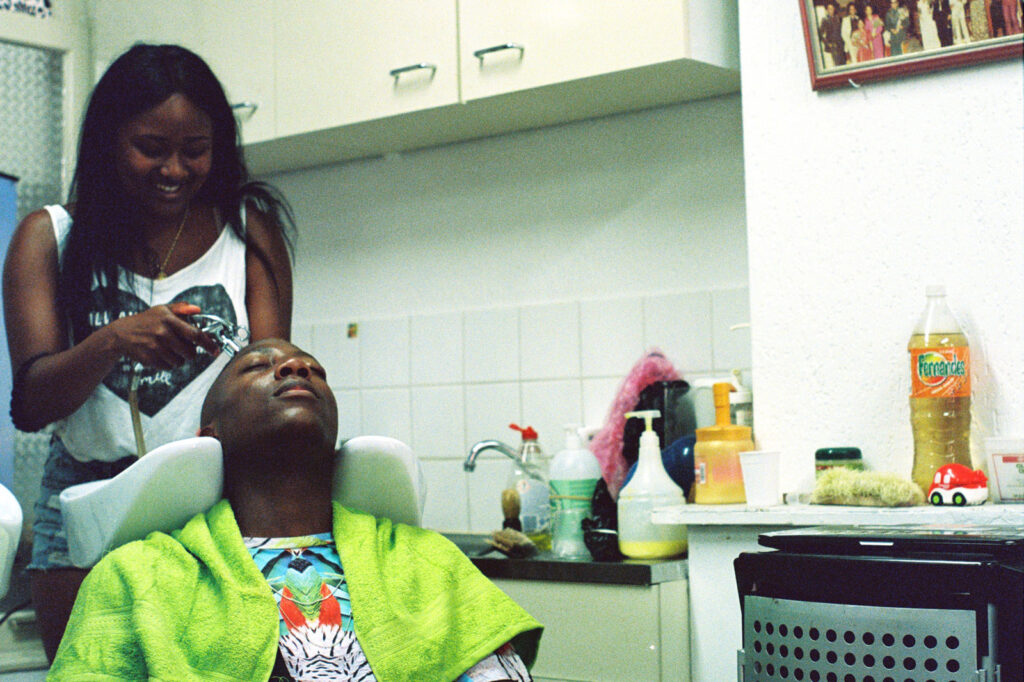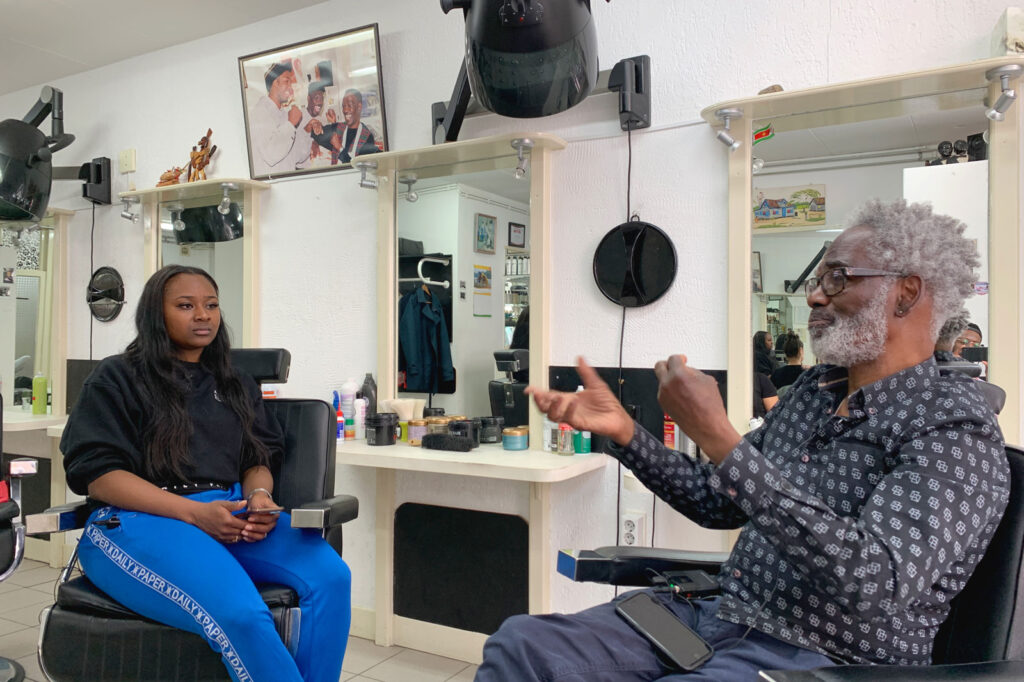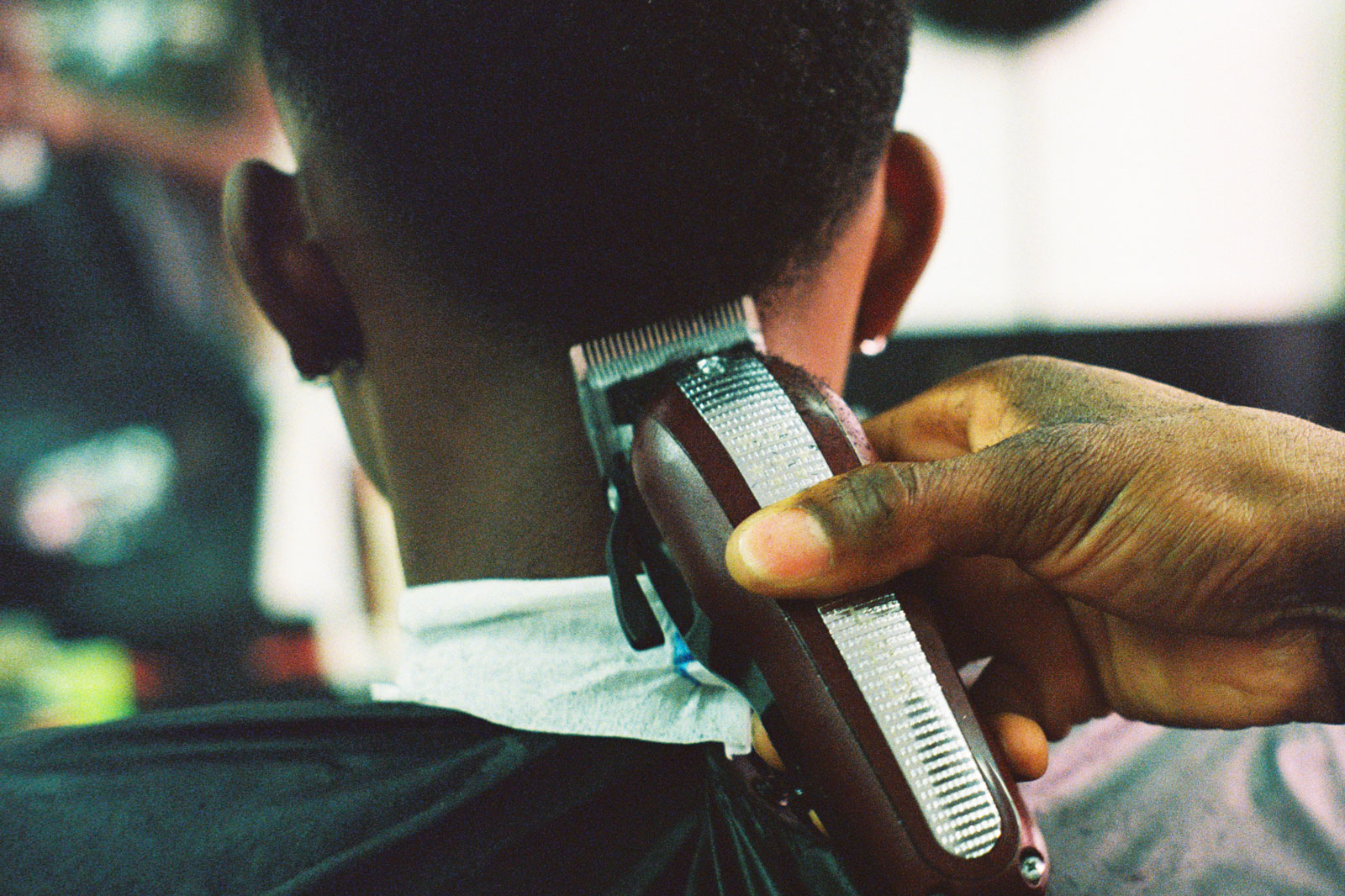In 1986 John Linger (he/him) opened his barbershop Robbedoes Hairdesign in Amsterdam’s De Pijp neighbourhood. His daughter Gwen (she/her) who also works in the family business, along with her older brother and sister, took on the role of interviewer to ask her father about his motivation, the strength of the business and what advice he’d to give to young, Black entrepreneurs.
It became a conversation about choosing your own path, gentrification and the importance of unions.
Gwen: How did you originally get into the haircutting business?
John: As a little boy in Suriname, I often went to a barber shop where my mother and grandmother worked as servants for the family that ran the shop. To earn a little extra money, I’d help clean up by folding towels and keeping the place clean. At that time, I never imagined that I would have my own barbershop today.
Gwen: What future did you see for yourself?
John: I was planning to become an electrician. I came to the Netherlands in the first place for training. Once I got here though, I realised that being an electrician wasn’t for me. I preferred cutting my friends’ hair. In Suriname, it’s quite normal to take your mother’s scissors and cut your friends. So I picked it back up in the Netherlands and, thanks to word-of-mouth, my clientele started to grow. One thing led to another and eventually I enrolled in hairdressing training.
Gwen: What did you learn there?
John: Mainly I learned how to cut European hair. The teachers at the school didn’t know what to do with Black hair. Classes about Afro hairstyles were only scheduled once every three months on the program – it was a separate workshop altogether back then. But those workshops inspired me so much. I wanted to experience and learn more about cutting and styling Black hair so I went to special Black hair conventions in England at the time. That way I was able to specialise.

Gwen: Does this specialisation still influence our customer base today?
John: The nice thing about the shop is that everyone feels welcome here. Black, white, young, old – everything is mixed up here, everyone is welcome here. If you ask me, that’s really the strength of our business. Anyone can come here. If someone with a different skin colour comes in, I never say that I don’t know how to cut their hair. It’s always been my motivation to be able to cut every customer’s hair. What does strike me is that many people with an African background come by. I think it’s because I’m a Black man myself. If you can identify with someone, it sets a different expectation and you feel safe more quickly. People usually want to get a cut from someone who looks like them.
Gwen: People still know where to find us, although De Pijp has changed a lot in recent years …
John: I’ve seen and experienced the changes in De Pijp up close. When I got here in 1987, it was completely run down. Everything that God forbids happened here. There were illegal gambling houses, a lot of drug dealing. I remember like it was yesterday when two men chased each other with a gun down the Albert Cuypmarkt. That crazy environment made people pack up their things and move elsewhere.
Gwen: How do you see the neighbourhood today?
John: To make the area more attractive and appealing, the municipality renovated dilapidated buildings and invested in constructing new ones. The result is gentrification that’s made De Pijp today into a yuppie and tourist area. When I tell people that I have a business at Albert Cuyp, people say “oh,what a good location!”

Gwen: How’s that affected you and the business?
John: As a result of the changes, I’ve had some trouble with my landlord. He wanted to keep increasing our rent, because rents in the rest of the neighbourhood exploded. Fortunately, I’m affiliated with the hairdressing union so I was able to get legal help there. You pay an amount every year as a contribution – in return they help you to arrange your affairs, offer support. From landlord issues to government regulations, they’re there for everything. For example, with the current corona crisis, the union sent over a lot of information about my options. As a hairdresser or barber, you know your craft but you don’t know everything. I recommend every hairdresser starting out in the industry to do the same.
Gwen: Do you have any more tips for young people?
John: Make sure you practice your profession as you can, however much you get paid. Be honest with yourself and your customers and keep learning and investing in yourself. I was always happy with what I earned, even when I got 90 cents an hour as a welder in Suriname when I was young – I’m also very happy that I went to school. That was normal when I was growing up. In fact, my mother thought that I should start working as soon as possible. I’m glad I didn’t always take her advice because I love hairdressing as a profession. Every day, I meet the nicest people who all leave the shop differently to how they came in. A new haircut works wonders.

Gwen: Finally, what does the future look like for Robbedoes Hairdesign?
John: We’ll keep renting out chairs to barbers. When you employ people, you have a big responsibility towards them. Say, if they get sick, you still need to pay their salaries. When a freelancer rents a chair from you, there’s less responsibility. This used to be illegal – in 2000 all the rules around this changed. Nowadays, it’s legal with many people working freelance so I see a future in that. I also want to focus on cosmetics. There’ll also be money in that too.
A Dutch version of this interview appears on page 12 of Journal 001
Follow Robbedoes Hair Design: @robbedoes.today
Photography: Sharon Jane D, Obi Mgbado, Mikki Rao, Kristen Dania
Support Black-owned businesses in Amsterdam
Robbedoes Hair Design has been serving the community for nearly 40 years.
Explore other Black-owned businesses in our city guide, Mini Maatje.




